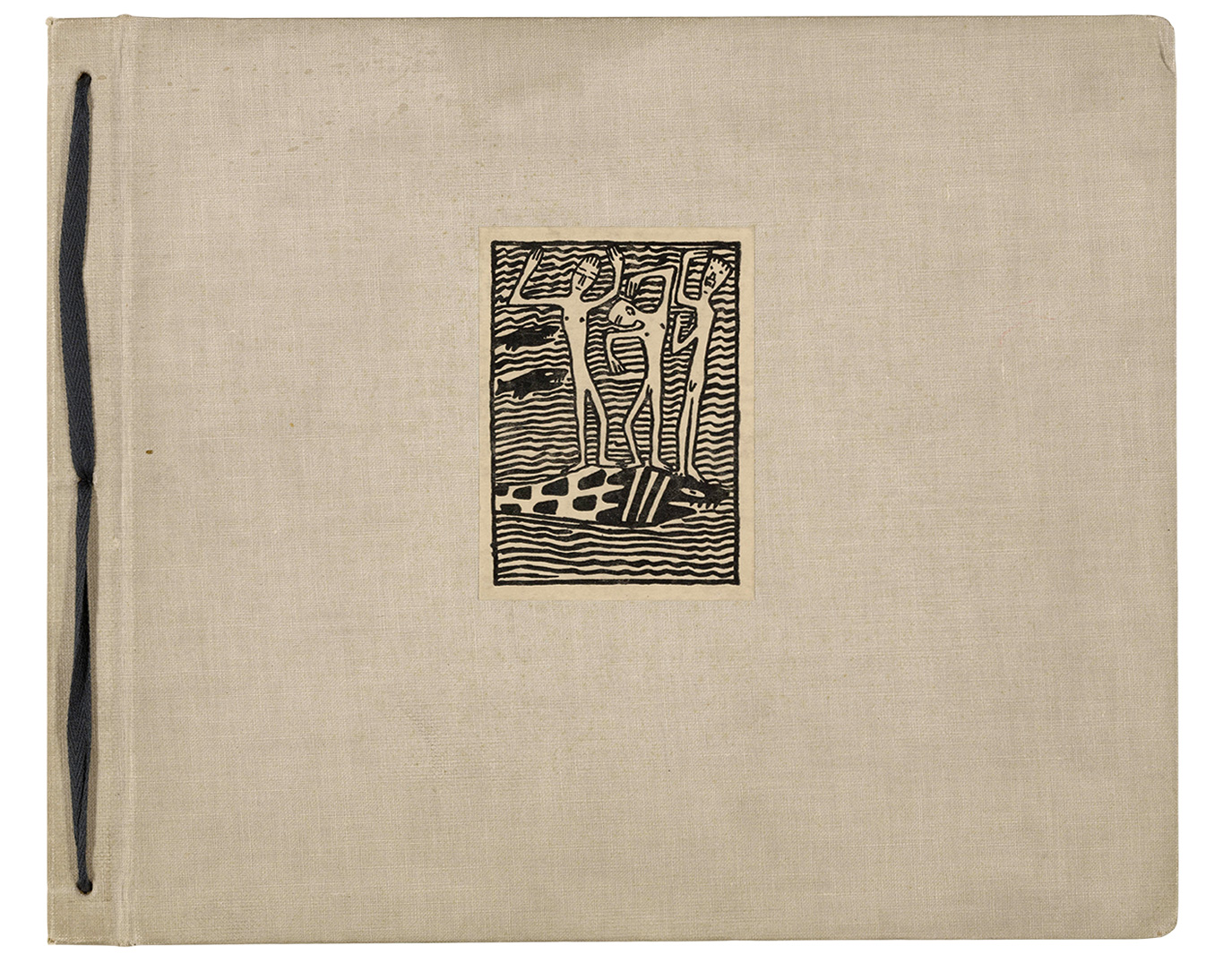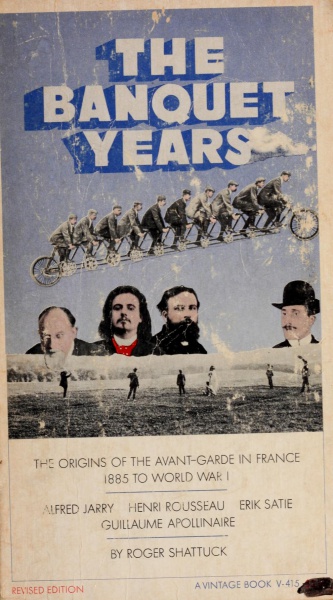Oskar Kokoschka: Die träumenden Knaben / The Dreaming Youths (1908/1917) [DE]
Filed under artist publishing, children's book | Tags: · art, dreams, jugendstil, poetry, psychoanalysis, sexuality

“In 1907, Fritz Waerndorfer, the financial backer of the Wiener Werkstätte, the leading design workshop in Vienna, commissioned Oskar Kokoschka, still a student at Vienna’s Kunstgewerbeschule (School of decorative arts), to make an illustrated fairy tale for his children. Kokoschka instead delivered a haunting poem about awakening adolescent sexuality set on far-off islands, away from the modern city and bourgeois life. His carefully composed text alluded to classical and contemporary literature by Johann Wolfgang von Goethe and Viennese writer Peter Altenberg. Kokoschka dedicated the volume to artist Gustav Klimt, from whom he borrowed the square format for the images, which push the text to the margins.
The book debuted at the monumental Kunstschau exhibition in Vienna in 1908. The original printer, who worked with another publisher of a famous series of children’s books, backed out upon seeing Kokoschka’s proofs. The Wiener Werkstätte published the book in 500 copies under its own imprint. As anticipated, the work sold poorly. In 1917, publisher Kurt Wolff, who had befriended the artist, reissued 275 remainder copies.” (Source)
Commentary: Rosa J.H. Berland (Source: Notes in the History of Art, 2008).
First published by Wiener Werkstätte, Vienna, 1908
New edition: Kurt Wolff, Leipzig, 1917
Printer of plates: Albert Berger, Vienna (lithographs)
Printer of plates: August Chwala, Vienna (line block reproductions)
Printer of text: August Chwala, Vienna
Typography: Antiqua (Ver Sacrum [1898], Imperial-Royal Court Foundry Poppelbaum)
10 unnumbered folios, 24 x 29.3 cm
via MOMA
PDF (1917 edition, 12 MB)
Comment (0)Roger Shattuck: The Banquet Years: The Origins of the Avant-Garde in France, 1885 to World War I., Rev. ed. (1955/1968)
Filed under book | Tags: · 1880s, 1890s, 1900s, 1910s, absurd, anarchism, art, art history, avant-garde, cubism, dada, dreams, france, literature, logic, montage, music history, painting, pataphysics, poetry, theatre, typography

In this book Roger Shattuck portrays the cultural bohemia of turn-of-the-century Paris who carried the arts into a period of renewal and accomplishment, and laid the ground-work for Dada and Surrealism.
“…Then came the idea–a kind of gambler’s hunch–that the trio Rousseau-Satie-Apollinaire represented several significant aspects of the period and could reveal them better than any single figure. The idea would not die. [..] Jarry had forced his way into the group and established himself close to the center of things. He helped clarify my underlying subject: how the fluid state known as bohemia, a cultural underground smacking of failure and fraud, crystallized for a few decades into a self-conscious avant-garde that carried the arts into a period of astonishingly varied renewal and accomplishment. [..] An enormous amount has been written on this era and these men since the first edition of this book in 1958. I have taken account of some of it by changing those passages where new facts have come to light.” (from the Preface to this edition)
First published in 1955
Publisher Vintage Books, 1968
397 pages
Review (Alfred Kazin, The Reporter, 1958)
Review (Sidney Tillim, College Art Journal, 1959)
Review (Justin O’Brien, The Saturday Review, 1958)
PDF (115 MB, no OCR)
Comment (0)Peter Sloterdijk: Derrida, an Egyptian: On the Problem of the Jewish Pyramid (2006/2009)
Filed under book | Tags: · dreams, language, metaphysics, ontotheology, philosophy

“Shortly before his death in 2004, Jacques Derrida expressed two paradoxical convictions: he was certain that he would be forgotten the very day he died, yet at the same time certain that something of his work would survive in the cultural memory. This text by Peter Sloterdijk – one of the major figures of contemporary philosophy – makes a contribution of its own to the preservation and continuation of Derrida’s unique and powerful work.
In this brief but illuminating text, Sloterdijk offers a series of recontextualizations of Derrida’s work by exploring the connections between Derrida and seven major thinkers, including Hegel, Freud and Thomas Mann. The leitmotif of this exploration is the role that Egypt and the Egyptian pyramid plays in the philosophical imagination of the West, from the exodus of Moses and the Jews to the conceptualization of the pyramid as the archetype of the cumbersome objects that cannot be taken along by the spirit on its return to itself.
‘Egyptian’ is the term for all constructs that can be subjected to deconstruction – except for the pyramind, that most Egyptian of edifices, which stands in its place, unshakeable for all time, because its form is the undeconstructible remainder of a construction that is built to look as it would after its own collapse.”
First published in French as Derrida, un Égyptien, Maren Sell Éditeurs, Paris, 2006
Translated by Wieland Hoban
Publisher Polity, 2009
ISBN 0745646395, 9780745646398
80 pages
PDF, PDF (updated on 2015-12-13)
Comments (3)
